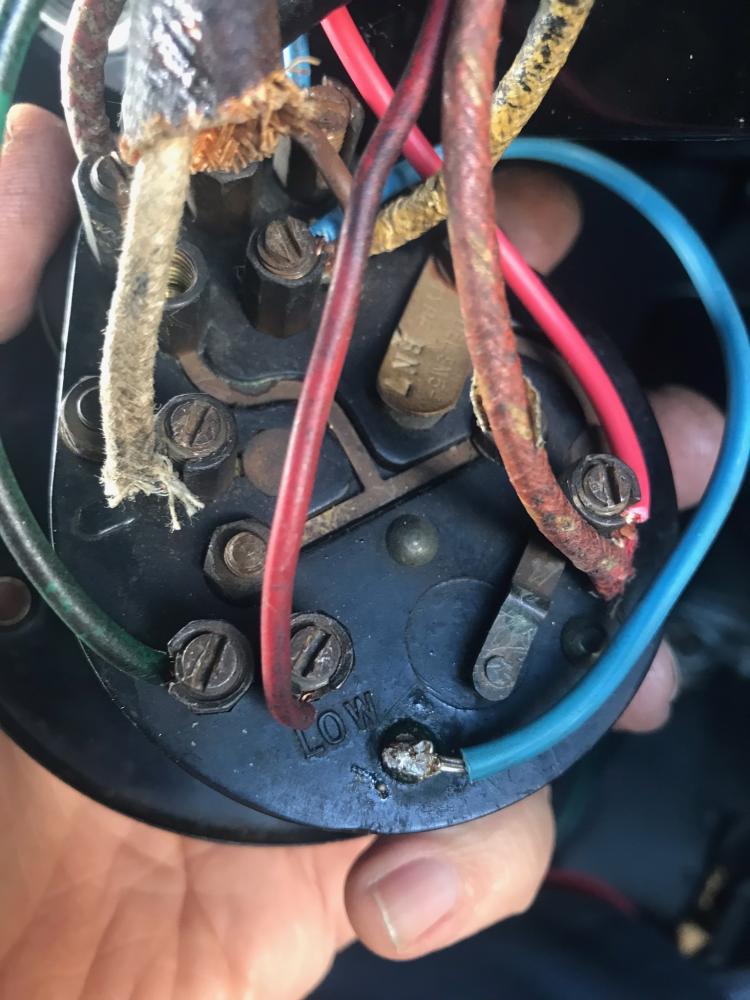Yes I did see 9v at the D terminal of the Dynamo last Friday.
Saturday, with the wiring returned to the locations as shown in the wiring diagrams I was measuring around 1v.
I found that the D and F (SH) terminals had been reversed on the dash switch SM5.
Connecting the D & F terminals at the dynamo now reads 1v.
I have tried flashing the dynamo with 6v.
I’m going to give the car a run this week, to see if it comes back to life.
Then the plan is to remove the dynamo for bench testing.
I’m going to make Peter Clayton’s multi purpose service tool first for resetting the timing.
This is a photo of the rear of the switch.
Someone has added an extra wire (blue) soldered near to the ignition light from the D terminal. Disconnecting it causes the ignition light to stay on continuously.
Is this a fix for broken switch internals?






![[Image: 49983752958_9d98125b8e_k.jpg]](https://live.staticflickr.com/65535/49983752958_9d98125b8e_k.jpg)